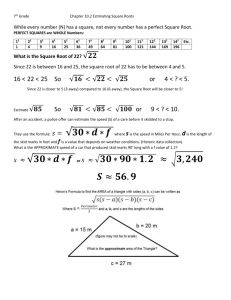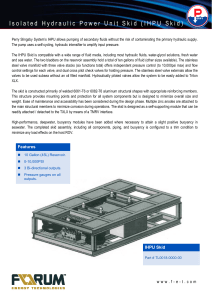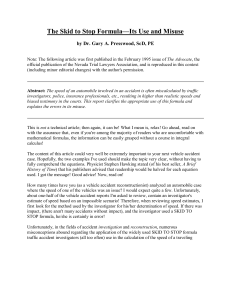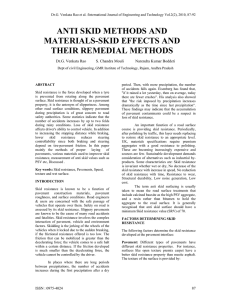Modeling Data with Radical Functions
advertisement
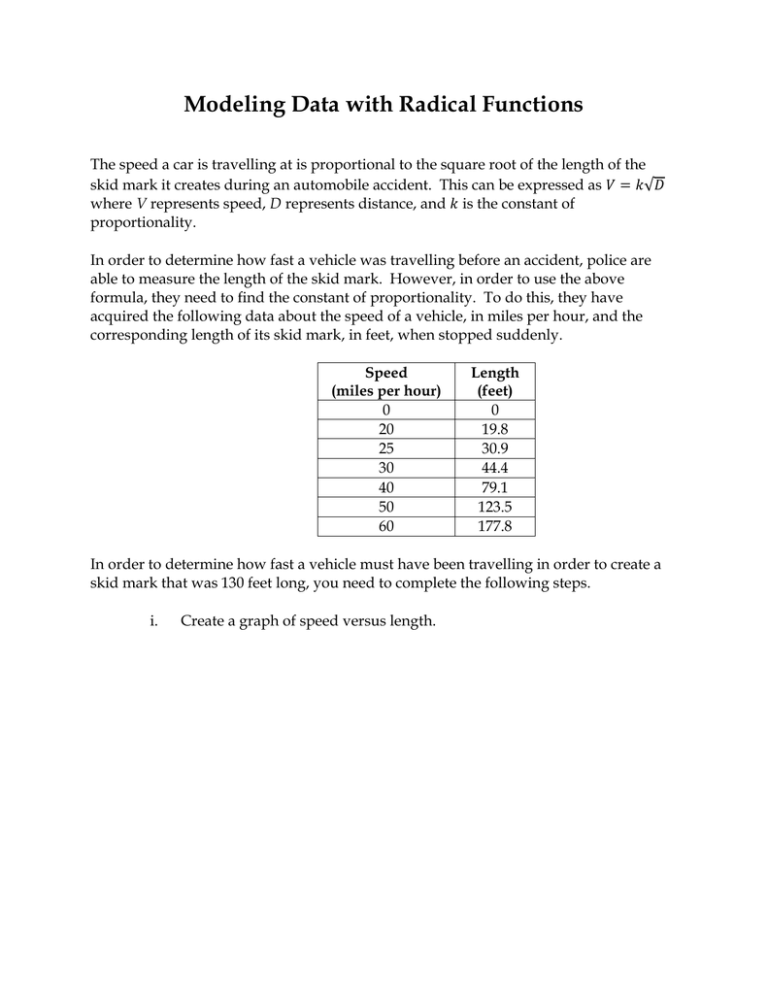
Modeling Data with Radical Functions The speed a car is travelling at is proportional to the square root of the length of the skid mark it creates during an automobile accident. This can be expressed as 𝑉 = 𝑘√𝐷 where V represents speed, D represents distance, and 𝑘 is the constant of proportionality. In order to determine how fast a vehicle was travelling before an accident, police are able to measure the length of the skid mark. However, in order to use the above formula, they need to find the constant of proportionality. To do this, they have acquired the following data about the speed of a vehicle, in miles per hour, and the corresponding length of its skid mark, in feet, when stopped suddenly. Speed (miles per hour) 0 20 25 30 40 50 60 Length (feet) 0 19.8 30.9 44.4 79.1 123.5 177.8 In order to determine how fast a vehicle must have been travelling in order to create a skid mark that was 130 feet long, you need to complete the following steps. i. Create a graph of speed versus length. ii. What type of function is created from the data? (example: linear, quadratic, radical) iii. What type of function would be created from the square root of the graph you just created? (example: linear, quadratic, radical) iv. Take the square root of this graph using the transformation properties you have learned about throughout this lesson. To get a more accurate picture of what the square root graph looks like, create a table of values. Speed Length √𝐿𝑒𝑛𝑔𝑡ℎ (miles) (feet) (feet) 0 20 25 30 40 50 60 v. What is the slope of this graph? vi. What is the relationship between the slope of the graph and the constant k in the equation 𝑉 = 𝑘√𝐷? vii. What is the value of k in the equation 𝑉 = 𝑘√𝐷? viii. Using the equation you found in (vii), determine how fast the vehicle must have been travelling in order to create a 130 foot skid mark.
